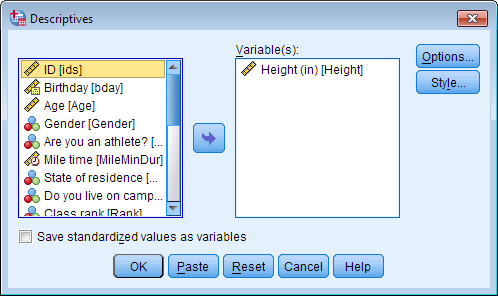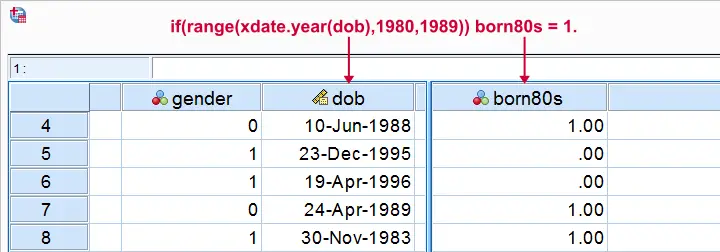
This will be in numerical form (1, 2, 3, …), but you can change it to a verbal descriptor for consistency (Figure 3). SPSS will automatically generate a new variable, which will appear at the end of your dataset.

Repeat with all the variables, separating them with comas.

#Spss code for scoring how to
Here’s how to merge the Likert items Starting out I will also assume that you have already established that your scale is internally consistent, so I will focus only on the technical aspects of merging the variables.

I assume that you will already know how to define variables and values, how to toggle between the numerical expression and verbal descriptor of the values (i.e., you can make SPSS show responses as “strongly agree/agree/disagree/strongly disagree” or as “1/2/3/4”), and how to key in data. Using the same example as above, I need to create a new ‘super-variable’, which shows the mean of items (1), (2) and (3) for each respondent. The same steps can be modified to add up the data. In this post, I will show you how to estimate the median, because this is slightly harder. We can do this in two ways: adding the data or estimating the median. In order to interpret these data, we need to summarise the data in the scale. For instance, if I want to measure people’s attitudes towards sweets, I might ask them to record what they think about the following statements: 1. If you want to read up on Likert scales before you go on, you can find some information in this post.īefore we start Why should you summarise Likert scale dataĮlsewhere in this blog, I have written that a Likert scale might consist of several items that measure a similar underlying construct (a latent variable). So, that is how to use SPSS to create Z-scores very quickly.This post will give you some advice about using SPSS to summarise data that were generated with a Likert scale. This is the Z-scores of the Scores variable we started with. So, in the example, this is called Zscores. If you now go to the Data View within SPSS, you should see a new variable has been created, which is named as the same variable as before with a Z prefix added. It is this simple tick box which enables the creation of Z-scores! Also, click the option to Save standardized values as variables. Next, move the scores that need to be converted into the Variable(s) box to the right.

To calculate Z-scores, firstly go to the Descriptives by going to Analyze > Descriptive Statistics > Descriptives.Ģ. Simply, it is just a list of 10 scores on a memory test.ġ. To do this, I will use an example, as mentioned previously. Z-scores, therefore, are a useful way of standardising values. What is a Z-score?Ī Z-score, also known as a standard score, represents the number of standard deviations (SDs) a data point is away from the average (mean) of the group. The process is actually ridiculously easy, it’s just not very obvious within the SPSS interface on how to do it. In this guide, I will explain how to calculate Z-scores by using SPSS, in three simple steps.


 0 kommentar(er)
0 kommentar(er)
